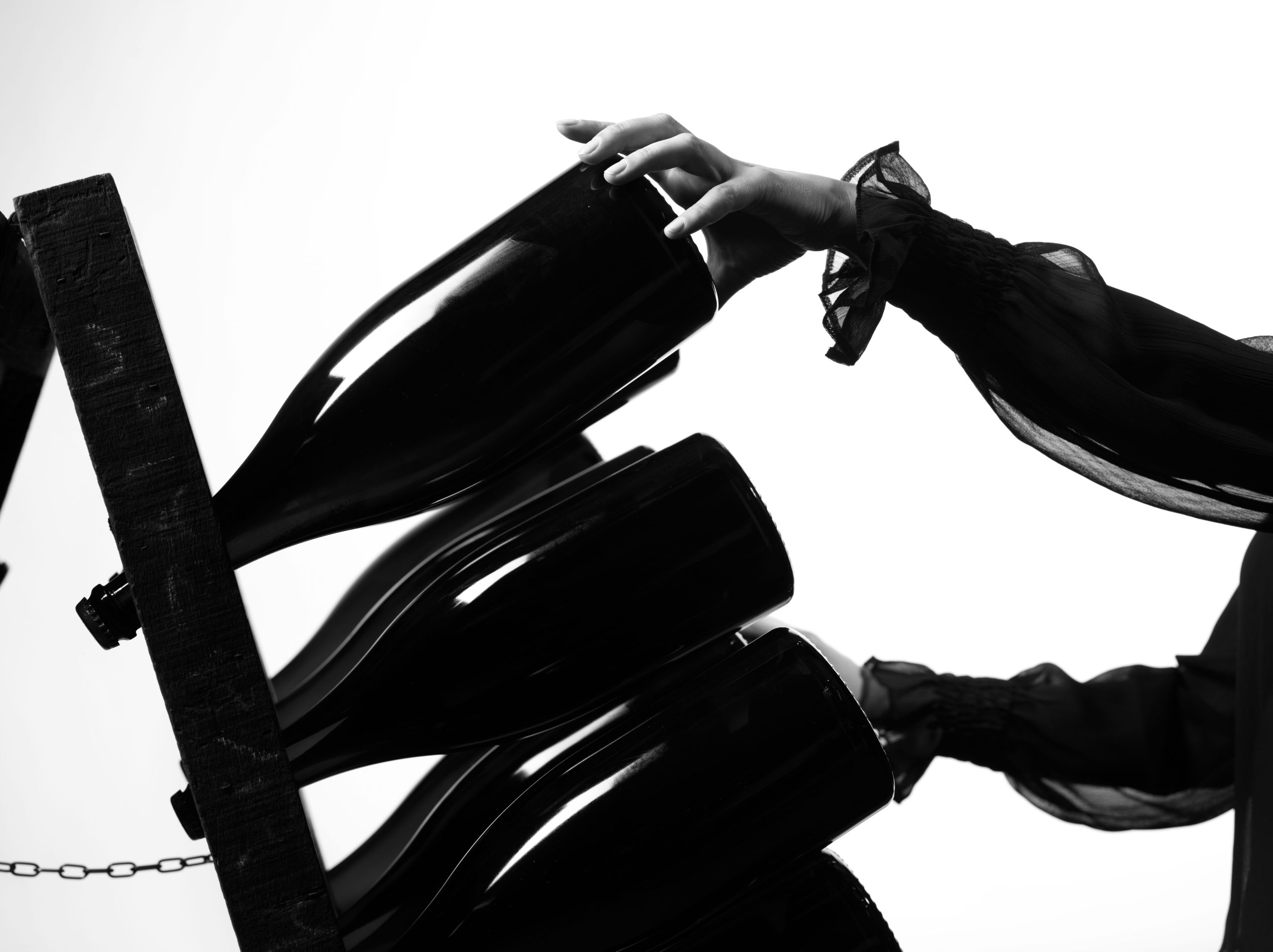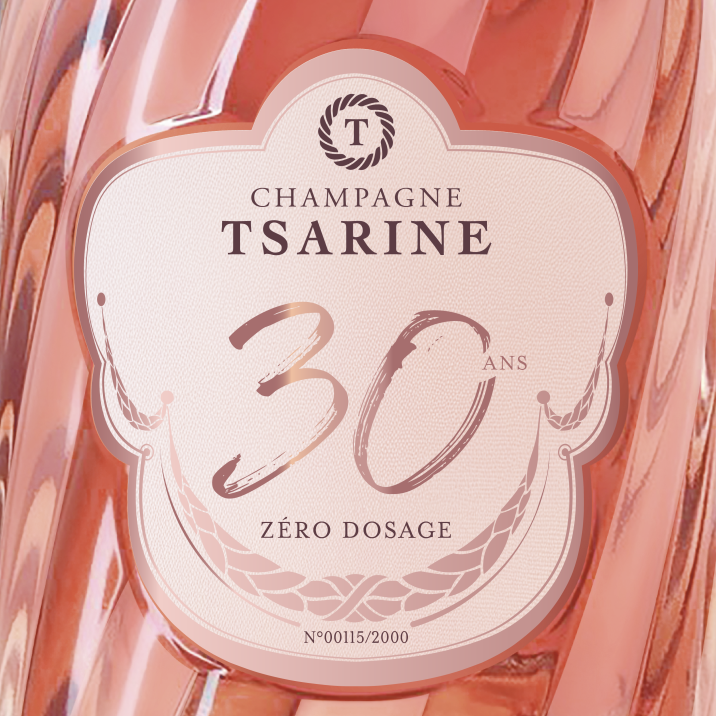Class without classification: Grand Cru brand extension and the attribution of reputation by association
I have written a fair bit about competitive systems of classification in recent weeks. But there are clearly other strategies for promoting the reputation of a wine, particularly when it is neither classified nor even eligible for classification.
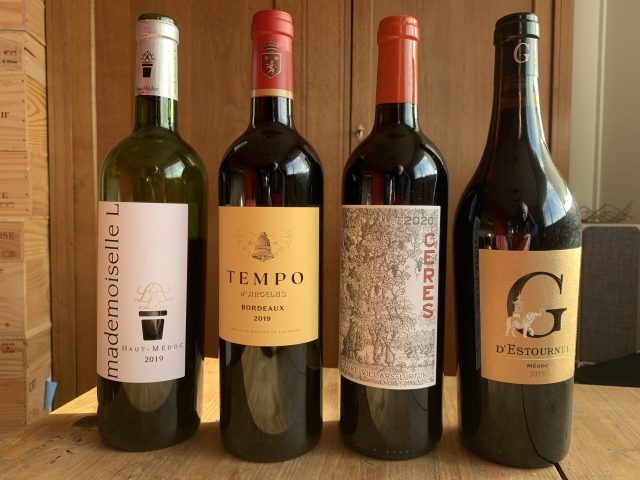
One of these, arguably increasingly important in recent years, is what might be term ‘Grand Cru brand extension’. Here, a famous estate (often, but not necessarily, a classed growth) associates itself clearly, explicitly and directly – through naming, marketing and/or common branding with what might otherwise be regarded as a lesser wine (invariably, but not exclusively, one from a different appellation).
It is not difficult to come up with a few examples: Léo de Gaffelière (Malet-Rocquefort’s entry-level Bordeaux available in almost all Carrefour supermarkets in France), the ostensibly similar Le B de Maucaillou (a Bordeaux Supérieur available in red and white that is another big supermarket bestseller in France), the increasingly impressive Haut-Médoc de Giscours (which in fact comes almost exclusively from vines in former cru bourgeois estates vinified at Chateau Giscours in Margaux) and, of perhaps most famously, Baron Philippe de Rothschild’s Mouton Cadet.
Clearly this is not the only way in which these wines could be sold. So what might the property gain from such ‘Grand Cru brand extension’?
Typically, the strategy is to generate reputation by association. More precisely, the aim of linking an ostensibly ‘lesser’ wine with its more famous counterpart would seem to be:
- to signal the quality of the wine in comparison to its peer group in the hope of focusing the consumer’s attention and generating additional demand (and/or a higher price point for a given level of demand);
- to suggest, above all, a common style, approach or philosophy underpinning the viticulture and/or wine-making; and, in general,
- to supply to the market an accessible wine that might act as a point of entry to the brand or range of wines for those without the resources or the willingness to invest in the price of the wine whose image defines the brand.
For all of the above reasons, this might sound like a rather attractive strategy for the producer. But there are risks.
If the wine is either not good, not perceived to be good, or, perhaps more significantly, insufficiently accessible to the uninitiated, the consumer will not get past the entry level wine to the more prestigious and expensive part of the range. Worst still, the entire reputation of the brand can be threatened by what might be seen as its weakest link. Associating an ostensibly lesser label with the grand vin itself is not a one-way street. If one has a bad experience with, say, ‘Le Bordeaux de Chateau X’ it is not difficult to imagine that experience tainting, at least to some extent, one’s impression of Chateau X itself. In a world in which reputation is arguably one’s most precious asset, the reputational risk might well be seen to outweigh any pecuniary advantage.
This might not then be a strategy for everyone. And indeed, it is much more common for the more famous chateau not to promote so loudly or explicitly the DNA it might be seen to share with a lesser cru. Chateau Le Crock (‘Leoville-Poyferré’s St-Estèphe’) and Chateau Beaumont (‘Beychevelle’s Haut-Médoc’) are excellent examples. Both have used the cru bourgeois classification system rather than brand extension to consolidate the reputation of their wine (the former being designated cru bourgeois exceptionnel, the latter cru bourgeois supérieur in the 2020 reclassification exercise).
What is clear is that if one is to engage in ‘Grand Cru brand extension’ one needs to be quite confident about the quality of all of one’s range. That in turn suggests that these wines, certainly the successful ones, need to be rather good (at least when compared to their genuine peers) and probably rather good value too if the risk of reputational damage to the brand is to be minimised.
So are they? That is a difficult question to answer in general terms. And my aim here is not to engage in a full and in any sense comprehensive analysis. Instead I pick just four of the best of such wines to see whether a case of this kind can be made at least for them.
The wines themselves
The four wines that I have chosen here are Mademoiselle L (third growth Chateau La Lagune’s ‘other’ Haut-Médoc), Tempo d’Angélus (St Emilion superstar Chateau Angélus’ much more accessibly priced Bordeaux); G d’Estournel (second growth Cos d’Estournel’s recently renamed Haut-Médoc that was previously sold as Goulée by Cos d’Estournel – hence the ‘G’) and Ceres (Paullac fifth growth Chateau Haut-Bages’s vin de nature Haut-Médoc).
What is first striking about these wines is how very different from one another they are. Each expresses both the philosophy and style of the famous name from which it hails and the terroir (or, in the case of Tempo d’Angélus, terroirs) from which it comes. They are anything but generic; and they are anything but pallid imitations of their more illustrious partner, as one might be forgiven for imagining.
Together, they make for a fascinating comparative tasting, not least as they offer an excellent introduction to the very different wine-making styles and personalities of the great wines of the left and right-bank without having to break the bank.
None of these wines are difficult to find and there is much to be learned from getting your friends together around the table with your favourite glassware and a bottle of each. This is also a great way to begin to appreciate the identity, character, quality – and, indeed qualities – of a vintage. In my case, and in the tasting notes that follow, that vintage is 2019.
Mademoiselle L
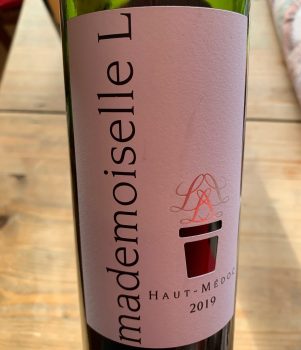
Partner Content
From the Haut-Médoc third growth La Lagune (the most highly ranked wine of the appellation), this comes from a separate single vineyard on the extension of the La Lagune slope, bordering the Gironde estuary and the famous Fort Médoc.
This is some of the very best terroir of the appellation, a quite fertile gravel soil quite close in character and quality to that of St Julien.
Mademoiselle L 2019 (Haut-Médoc; from a vineyard of 25 hectares in organic viticulture; 40% Cabernet Sauvignon, 55% Merlot and 5% Petit Verdot; aged in wood, partly in French oak barrels, but with no more than 30% new oak; 14.5% alcohol). Glossy and limpid in the glass with a very hazy pink/magenta rim. Fresh, aerial and very lifted on the nose, with a lovely authentically Médocain hint of cedar alongside the pure and fresh dark berry fruit and the very natural wild herbal and loamy elements. On the palate this is very soft and gentle on the entry, the bright almost crunchy berry fruit nicely drawn out along quite a precise and linear central spine. Pure, refined, elegant and accessible already, this is a super introduction to Caroline Frey’s La Lagune and made very much in the same style. 89.
Tempo d’Angélus 2019 (Bordeaux)
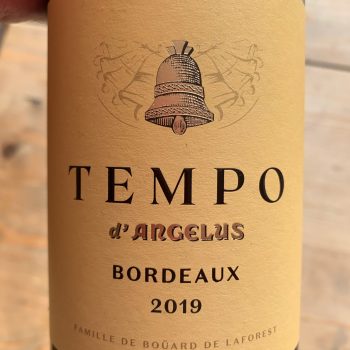 The project here is to render in a more accessible form the philosophy of Angéus itself. Don’t be deceived by the lowly appellation of Bordeaux itself for this comes from quality right-bank terroirs.
The project here is to render in a more accessible form the philosophy of Angéus itself. Don’t be deceived by the lowly appellation of Bordeaux itself for this comes from quality right-bank terroirs.
This is made from 15 hectares of vines belonging to Angélus that were acquired in 2017. It is in fact a blend of two vineyards in Castillon-la-Bataille and Sainte-Colombe and three distinct terroirs. The Castillon vineyard is on a south-facing clay-limestone slope adjoining Chateau Montlandrie. Its cool soils give a wine low in pH and high in polyphenol content (accentuating its aromatic profile and complexity). The Sainte-Colombe vineyard comprises two terroirs, a natural amphitheatre with a high clay content oil and a cooler clay-limestone, tuff rock and marl terroir on the southern-slope.
The wine is vinified in a purpose-designed cellar within the new ‘Chai Carillon’ (that was itself constructed for Chateau Angélus’ second wine, Carillon d’Angélus). This is, as Angelus’ publicity has it, “a Bordeaux grown as a Grand Cru” and “a more streamlined version of its more illustrious elders”.
Tempo d’Angélus 2019 (Bordeaux; 90% Merlot; 10% Cabernet Franc; aged in oak barrels for 18 months; 15% alcohol; Diam enclosure). The first vintage of this wine and already impressive. Bright, aerial and attractive on the nose with plenty of calcaire lift and grace and an impressively pure and slightly herb-tinged red and darker berry fruit nose; a little suggestion of Angélus oak too in the cedar and spice notes that develop in the glass. Svelte on the entry and, again, a wine that speaks quite eloquently of its terroir – the fine-grained calcaire tannins biding the fruit to the linear spine. Pure, precise and very elegant. This, of course, lacks the density or depth of Carillon or Angélus, but it’s cut from the same cloth and has the same personality. 90.
G d’Estournel
This wine was formerly known as Goulée by Cos d’Estournel. 2019 is the first vintage under its new epithet. It comes from the Goulée vineyard in the northern-most part of the Médoc appellation near the mouth of the Gironde estuary.
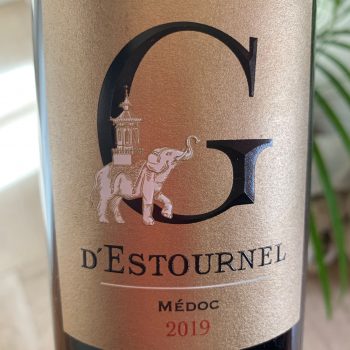
The vineyard, planted with an unusually high proportion of Merlot, is on a deep gravel hillside terroir. It has a cool microclimate with naturally high ventilation due to its proximity to the ocean. It produces a typically bright, fresh, fruit-forward wine, but one that is also very much in the style of Cos – one might also easily mistake it for a St-Estèphe if tasted blind.
G d’Estournel 2019 (Médoc; 86% Merlot; 13% Cabernet Sauvignon; 1% Cabernet Franc; 13.5% alcohol). Very viscous in the glass, this already looks classy. Bigger, richer and bolder than any of the other wines here and very marked on the nose at first by that northern Médocain ferrous-saline minerality, with a subtle waft of iodine and salt spray too. But then come those tell-tale exotic ‘Cos’ spices – here Szechuan peppercorns, star anise and cumin. Dark berry fruit with dark-roast freshly-ground expresso bean and dark chocolate, crushed rock and the faintest suggestion of wild herbs accompanying the baked plum and damson fruit. You’d guess this was St-Estèphe. Soft and velvety tannins disguise, at first, the impressive amplitude of this wine. Tender, pulpy and with the grain of the tannins somehow reinforced by the ferrous minerality. Very ‘Cos’ in style – a supremely elegant and refined expression of quite a robust terroir producing lots of tension and interest. 91.
Ceres
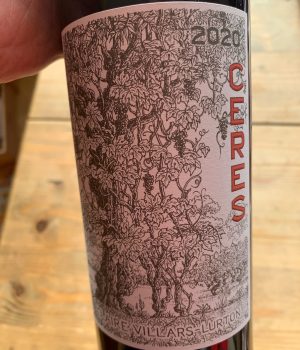 In a way this is the most distinctive of all of these wine. It comes from a project very much designed to express the identity and underpinning philosophy of Chateau Haut-Bages Libéral, the Pauillac fifth growth and of its talented and passionate owner, Claire Villars-Lurton. Ceres comes from a single, if substantial, parcel of 8 hectares on an argilo-calcaire terroir in Vertheuil in the appellation of Haut-Médoc. The vineyard itself is a pioneering model of both agroecology and agroforestry. It is farmed organically and is in conversion to biodynamic viticulture. The wine is named after the Roman goddess of agriculture and fertility, with a fitting label designed by the artist François Houtin. It is the first natural organic wine made without artificial pesticides, herbicides or added sulphur from a classed growth property.
In a way this is the most distinctive of all of these wine. It comes from a project very much designed to express the identity and underpinning philosophy of Chateau Haut-Bages Libéral, the Pauillac fifth growth and of its talented and passionate owner, Claire Villars-Lurton. Ceres comes from a single, if substantial, parcel of 8 hectares on an argilo-calcaire terroir in Vertheuil in the appellation of Haut-Médoc. The vineyard itself is a pioneering model of both agroecology and agroforestry. It is farmed organically and is in conversion to biodynamic viticulture. The wine is named after the Roman goddess of agriculture and fertility, with a fitting label designed by the artist François Houtin. It is the first natural organic wine made without artificial pesticides, herbicides or added sulphur from a classed growth property.
Ceres 2020 (100% Merlot; élevage is for just 6 months in concrete; organic and in conversion to biodynamic viticulture; 12.5% alcohol; Diam enclosure). Ultra fresh and floral. Pure, crystalline, with crumbly chalky tannins. Extremely vertical with plenty of lift on the nose. Wild, natural, herbal, bright and energetic; but also with a strong saline minerality more evident on the nose than the palate. Red and black cherries, bramble compote and fruits of the forest, some cracked peppercorn notes too. Sapid on the long, chewy grape-skin finish. 89.
Related news
The biggest celebrity drinks collaborations of 2025

